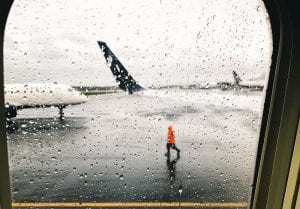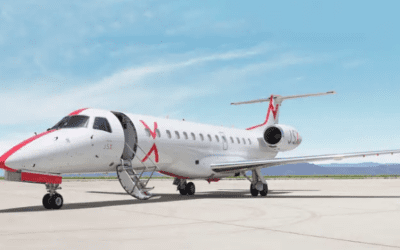Here are three reasons why a weather delay makes schedules @#%*!+$#

Now, there are thunderstorms in the New York area, and Newark Airport seems to be subject to year-round weather delays. He hadn’t thought to contact me about a change, figuring there were no earlier flights. But as it turns out, he probably could have gotten home a lot earlier. Why? Because airlines do not operate on the “first scheduled, first out” rule.
I am not talking about flights to different cities or even flights where one aircraft has a mechanical delay. This concerns regularly scheduled flights. When flights leave every hour or so between cities, and a plane starts getting delayed with a weather delay, it may be time to think about later options.
READ ALSO: What makes alternate airports so useful?
This seems counter-intuitive. Why would a delayed flight have to sit on the tarmac when an on-time flight gets to take off sooner? There are many reasons. It helps to realize that in many bad weather situations Air Traffic Control may tell an airline they can only have X percent of their normal takeoffs and landings, but the airlines themselves get to choose which flights to prioritize.
On-time rankings matter
First, airlines have to post their on-time percentages for on-time flights. Reports of on-time percentage are important in their marketing. In the reports, 0 is 0 to 10 percent, 9 is 90-100 percent. But they only have to post if the plane arrives within 15 minutes of scheduled arrival. And it’s binary. So if they have two flights, and one is an hour late, and the other is close to on-time, there are advantages to at least keeping one flight on-time instead of having both of them reporting late.
Crew schedules factor into decisions
Second, pilots and crews have different schedules and maximum time on board with flights. If a crew for one flight is close to maxing out, an airline will work hard to ensure they can complete the flight. No one likes it when a crew gets off the aircraft, and then everyone has to wait for the new crew to arrive, even if it’s one person.
Connecting passengers are important for airlines
Third, airlines know exactly how many people on each flight are trying to make connections and to where. If one flight has a number of passengers connecting, say, to an international flight, or some full-fare business class passengers connecting anywhere… well, that flight, all things being equal, will get priority.
I have no clue which situation applied to my client today. Since San Francisco is a major international hub for United Airlines, it wouldn’t shock me if the later flights had more passengers connecting to the South Pacific tonight.
ALSO ON TRAVELERS UNITED: Scores of passengers suffer illness on airlines
Of course, sometimes, when flights are delayed, they DO take off in order. So you’re best off staying put. Travel agents who book a lot of air often learn to read the signs. One of my favorite clients used to work for an airline. He and I sometimes treat take-off delays like a game of roulette.
Whether you work with an agent or do it yourself, if your flight is delayed, a little active intervention and/or research into later options may end up saving a lot of time.
Featured photo by Tuce on Unsplash and Charles Leocha
Janice Hough is a California-based travel agent a travel blogger and a part-time comedy writer. A frequent flier herself, she’s been doing battle with airlines, hotels, and other travel companies for over three decades. Besides writing for Travelers United, Janice has a humor blog at Leftcoastsportsbabe.com (Warning, the political and sports humor therein does not represent the views of anyone but herself.)



